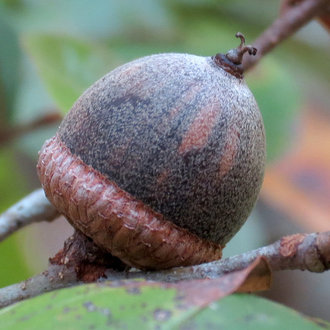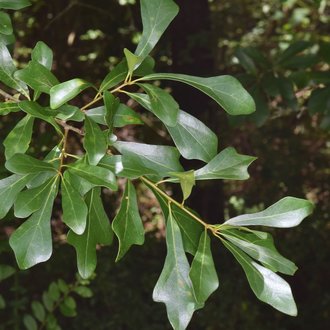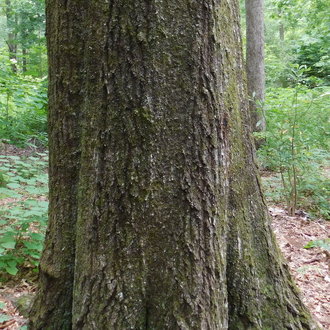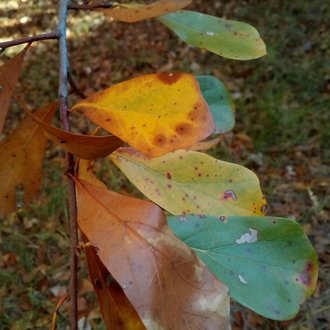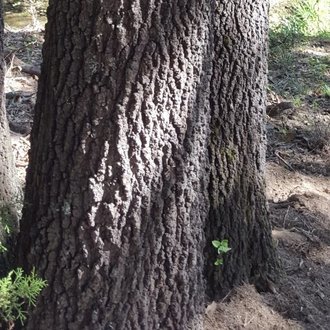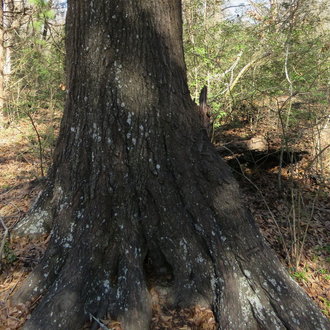Blackjack Oak vs Water Oak
These two species are frequently confused as their leaf shapes are similar and atypical for oaks. Although their ranges overlap extensively, they have almost no overlap in habitat, with water oak preferring flood-prone sites and sometimes moist uplands, whereas blackjack oak prefers extremely dry, nutrient-poor, fire-prone habitats. They are easily told apart by leaf size, shape, bark, acorns, and habitat.
Blackjack Oak (Quercus marilandica) | Water Oak (Quercus nigra) |
An oak, native to eastern North America, adapted to extreme, nutrient-poor sites that burn regularly. | A red oak of wet areas in the south, whose tardily-deciduous leaves have a distinct, spatula-like shape. |
Acorn usually significantly longer than wide. Acorn cap is tapered at the base and covers more of the nut. Photo © tallpaultheforester, CC BY-SA 4.0. | Acorn not significantly longer than wide. Acorn cap is short, has a flat base, and covers very little of the nut. Photo © Katja Schulz, CC BY 4.0. |
Leaves of mature trees are much larger, and their tip is usually flat-across. Leaves taper towards the base at first but come to an abrupt end. Photo © Doug Goldman, CC BY 4.0. | Leaves of mature trees are much smaller, typically have a diamond-shaped tip. Base is gradually tapered to a narrow point of attachment. Photo © skitterbug, CC BY 4.0. |
Bark, even on smaller trees, is thick and rugged, with heavily-cracked ridges and deep furrows. Photo © Cody Stricker, CC BY 4.0. | Bark, even on larger trees, is smoother and thinner. Photo © Camden Davis, CC BY 4.0. |
Solidly deciduous, with leaves all changing color before the arrival of winter. (Photo from Early November, North Carolina.) Photo © Doug Goldman, CC BY 4.0. | Tardily deciduous to semi-evergreen. Often retains some green leaves long after most deciduous trees have lost their leaves, sometimes even into January. (Photo from late November, North Carolina.) Photo © C., Public Domain. |
Base of trunk of mature trees not usually as buttressed, trunk being straighter where it meets the ground. Photo © Jennifer Ogle, CC BY 4.0. | Base of trunk of mature trees usually more buttressed, with large, woody roots extending quite far from the trunk where it meets the ground. These woody roots often correspond to thick, rounded ridges extending several feet up the trunk. Photo © Annika Lindqvist, CC BY 4.0. |
References & External Resources
These short lists show only links helpful for ID. For a complete list of references and resources also covering other aspects of ecology, visit the links section of the full article on each plant, which is the first entry here.




